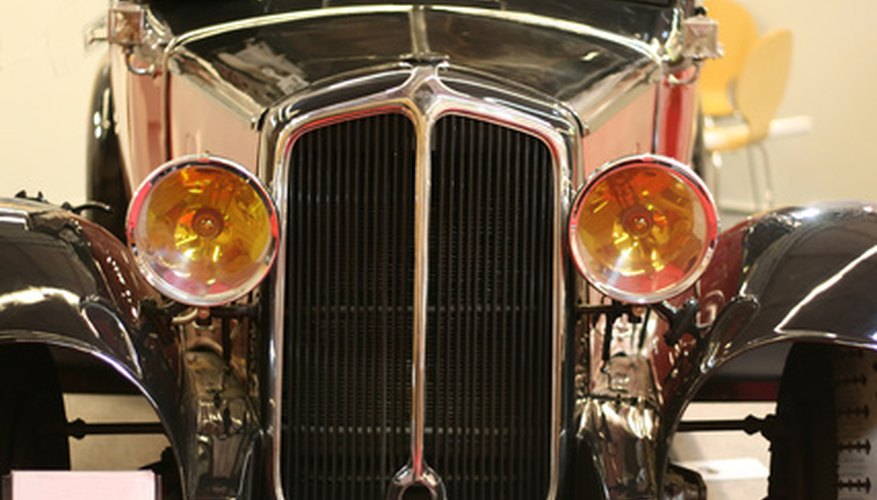The radiator in your car is an important part of the cooling system that ensures that the motor receives a constantly recirculated supply of coolant. As radiators age, the paint can become faded and dull from being in the hot, dirty confines of the engine bay. This, in turn, can make your engine bay look worse for the wear. Painting a car radiator is a straightforward process, though doing it properly means that the radiator will need to be removed from the vehicle's engine bay.
- The radiator in your car is an important part of the cooling system that ensures that the motor receives a constantly recirculated supply of coolant.
- Painting a car radiator is a straightforward process, though doing it properly means that the radiator will need to be removed from the vehicle's engine bay.
Drain the coolant from the radiator. This procedure varies depending on the model of car but usually involves opening a drain located at the bottom of the radiator. Drain the coolant into an appropriate container and either discard it or keep it for reuse.
Remove the radiator from the engine bay. The radiator is bolted into the engine bay, but how it is installed will vary greatly depending on the model. Consult a shop manual for your vehicle or examine how the radiator is installed to determine how to remove it. You will also need to remove any coolant hoses that attach to the radiator.
Scrub the exterior of the radiator with a wire brush and a cleaner like Simple Green. Dry the radiator with a shop rag. Since the radiator is out of the car, this is also a good time to take it to a radiator shop and have it inspected and pressure-tested for leaks. The radiator shop can also fix any bent cooling fins on the radiator if necessary.
- Remove the radiator from the engine bay.
- Since the radiator is out of the car, this is also a good time to take it to a radiator shop and have it inspected and pressure-tested for leaks.
Strip the old paint with paint stripper. Apply the paint stripper according to the directions on the container. Let the stripper sit until the paint is bubbling, then wipe or scrub it off. Repeat until all of the paint is removed.
Clean the radiator with white spirit and a shop rag until it is free of oil and residue. Apply a light coating of radiator spray paint. Radiator spray paint is specially formulated to block heat from the engine and is black in colour. Let the paint dry for a few minutes, then apply three or four solid coats of paint. Allow the paint to dry for at least several hours (or overnight if possible) before reinstalling the radiator in the engine bay.
- Strip the old paint with paint stripper.
- Allow the paint to dry for at least several hours (or overnight if possible) before reinstalling the radiator in the engine bay.
Reinstall the radiator and reconnect any hoses that were removed. Top off the radiator with coolant, start the motor and check for any leaks.
